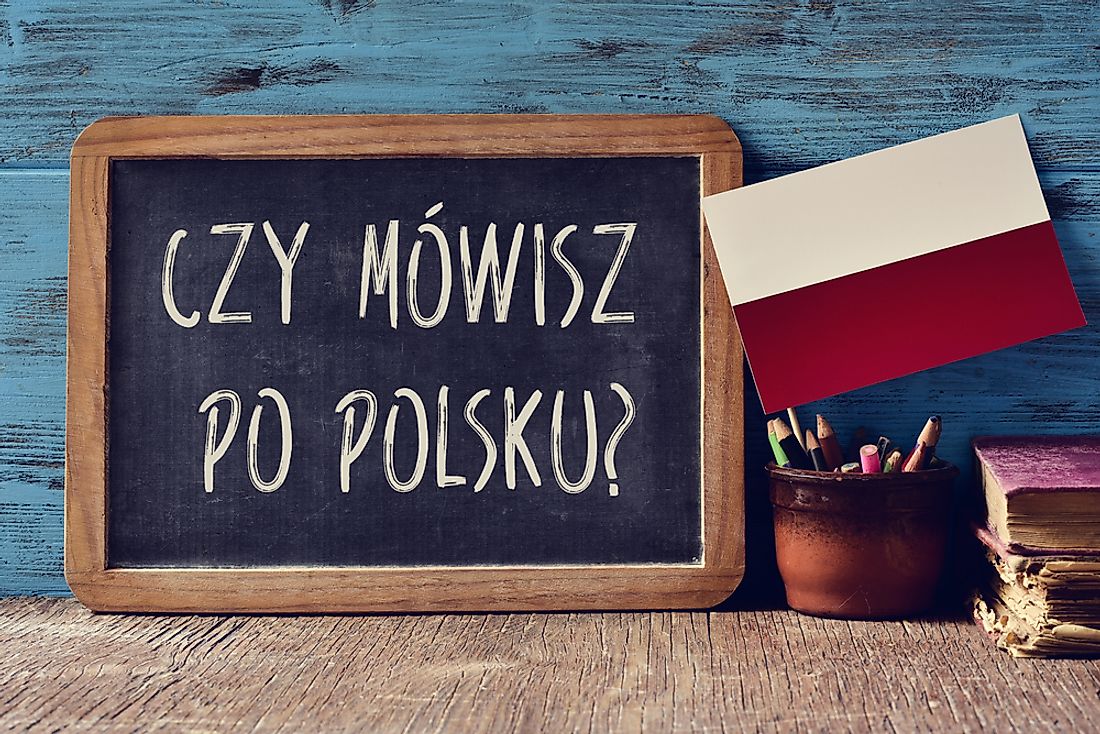Which Languages Are Spoken in Poland?

Poland is located in East-Central Europe and has a population of more than 38 million. This country has a long history of multiculturalism, with diverse ethnic groups that continue to exist today. Despite this diversity, this country has the highest rate of linguistic homogeneity in Europe. Its principal and official language is Polish. More than 38 million people speak Polish as a first language in Poland, which represents 97% of the population.
Polish is considered a West Slavic language and belongs to the Indo-European language family. Its development dates back to the 10th century AD, when the tribes of Vistula and Oder were united under Mieszko I. Because these indigenous peoples shared similar languages, a new standardized version began to form with the help of the adopted Latin alphabet. Between 1500 and 1700, Polish was a common language, or lingua franca, across large regions of Eastern Europe. It is the oldest, continuously used, non-Christian related Slavic language and has been used for both literature and governmental purposes without interruption since at least the 1500s.
Officially Recognized Minority Languages of Poland
The following are the minority languages of Poland, and their corresponding number of speakers: Kashubian (108,140); German (96,461); Belarusian (26,448); Ukrainian (24,549); Romany (14,468); Rusyn (6,279); Lithuanian (5,303); Armenian (2,000); Hungarian (1,000); Slovak (1,000); and Czech (1,000). Other officially recognized minority languages include Yiddish, Hebrew, Karaim, and Tartar.
Of these languages, the most widely spoken is Kashubian, which belongs to the Lechitic group of Slavic languages. It is believed to have originated from the language of the Pomeranian indigenous group, who are said to have arrived in the area prior to the Poles. Over time it has been influenced by Polabian, Old Prussian, and Low German languages. Kashubian is often considered a dialect of the Pomeranian language. The language itself has a number of dialects and Kashubian speakers from the north may have difficulty understanding Kashubian speakers from the south.
Unofficial Minority Languages of Poland
A number of languages spoken throughout Poland have not been officially recognized by the government. These include immigrant languages, foreign languages, Silesian, and Wymysorys. Silesian, interestingly, is the second most widely spoken language in Poland. Approximately 529,377 individuals report speaking this language at home. However, it has not been officially recognized by the government due to a dispute among linguists as to whether it is a distinct language or a dialect of Polish. It is often listed as a sub-language of the Lechitic language group, belonging to the Slavic family. Additionally, Silesian has been influenced by the Central German language. It is primarily spoken in the Upper Silesia area, which is divided between the southwestern region of Poland and the northeastern region of the Czech Republic. The Wymysorys language belongs to the West Germanic language group and is currently used only in Wilamowice, a town between Silesia and Lesser Poland. It is listed as an endangered language due to its small population of native speakers. Only 70 to 100 individuals report fluency in Wymysorys, all of whom are elderly adults.
Languages Used at Home in Poland
| Rank | Language | Number of Speakers in Poland |
|---|---|---|
| 1 | Polish | 37,815,606 |
| 2 | Silesian | 529,377 |
| 3 | Kashubian | 108,140 |
| 4 | English | 103,541 |
| 5 | German | 96,461 |
| 6 | Belarusian | 26,448 |
| 7 | Ukrainian | 24,539 |
| 8 | Russian | 19,805 |
| 9 | Romany | 14,468 |
| 10 | French | 10,677 |











